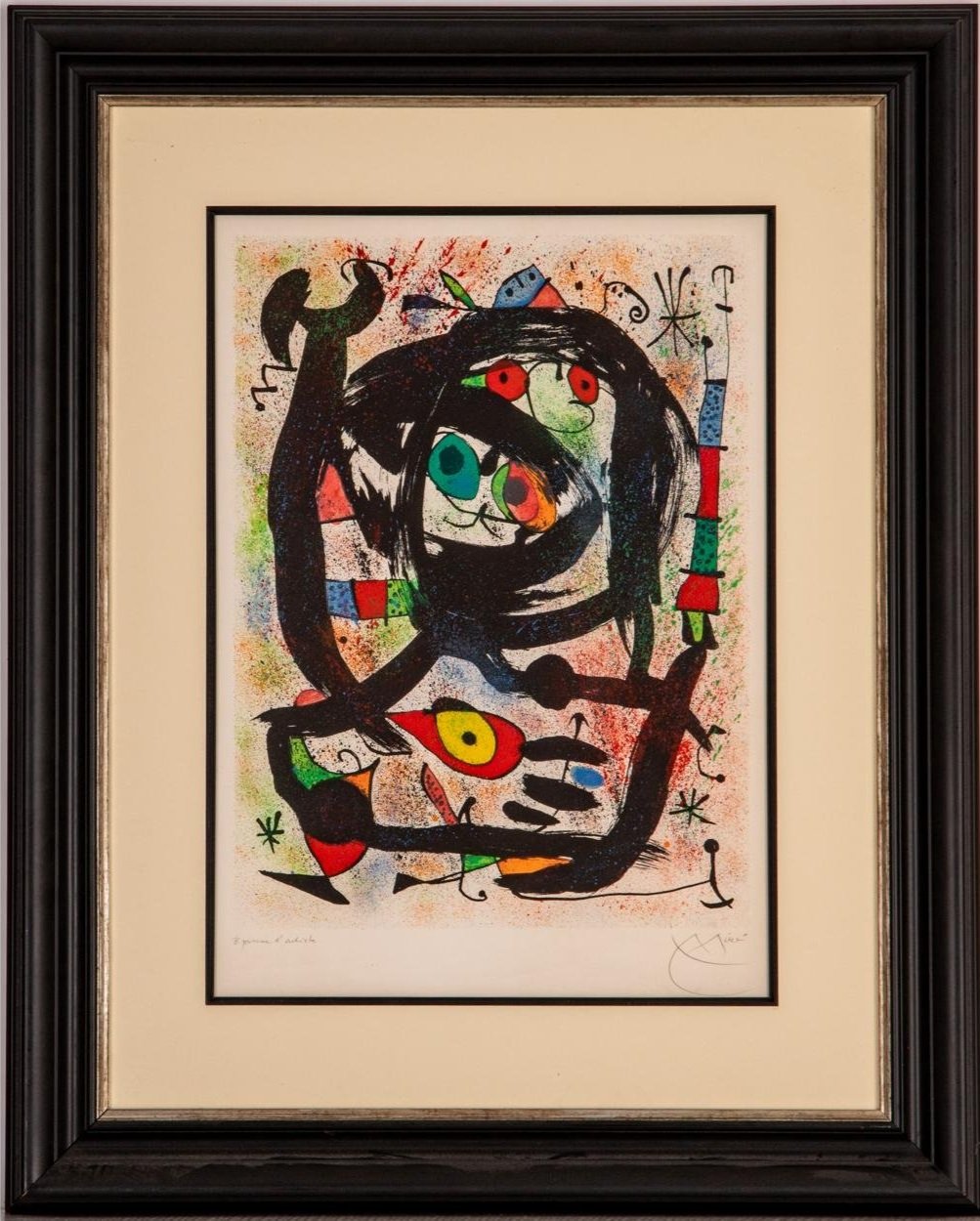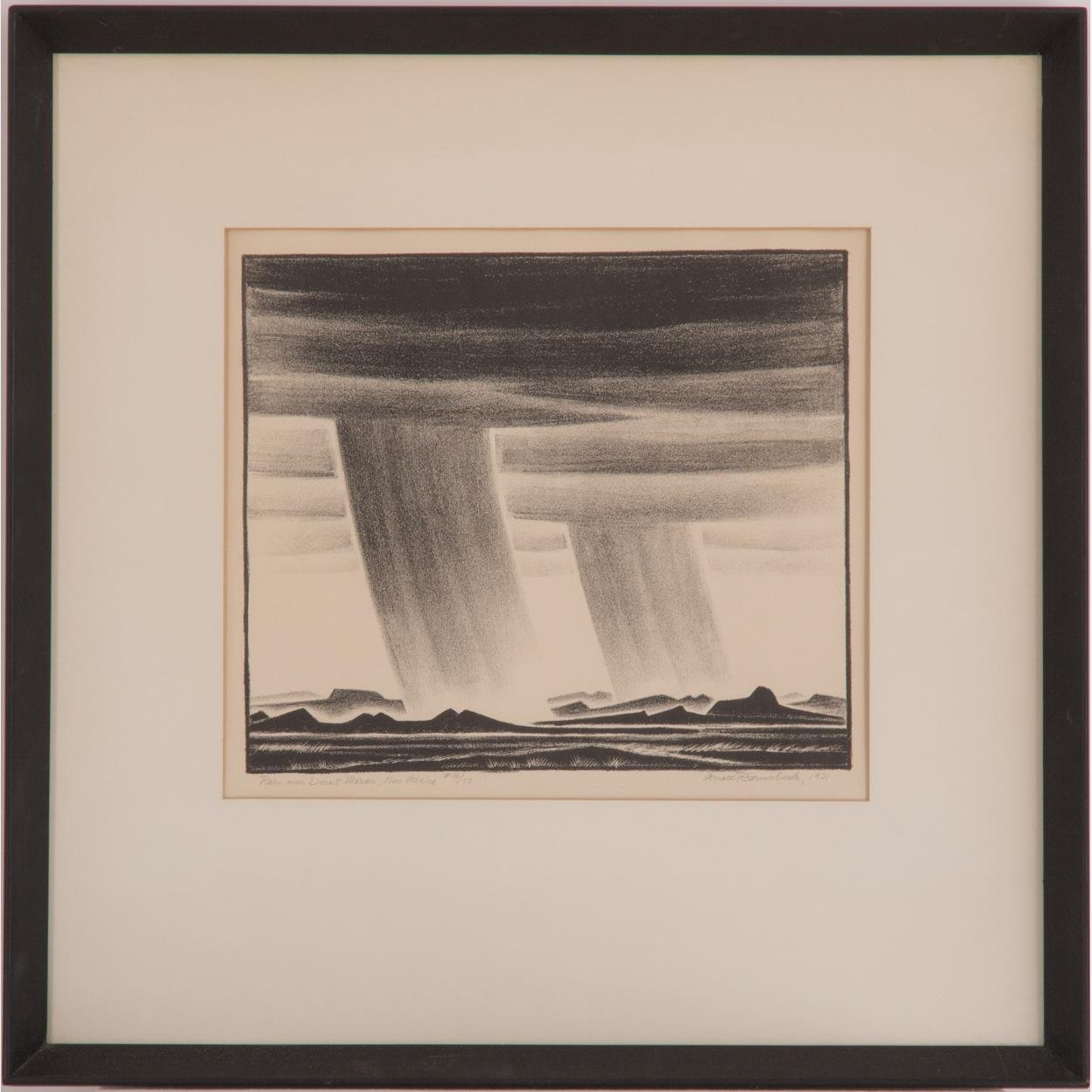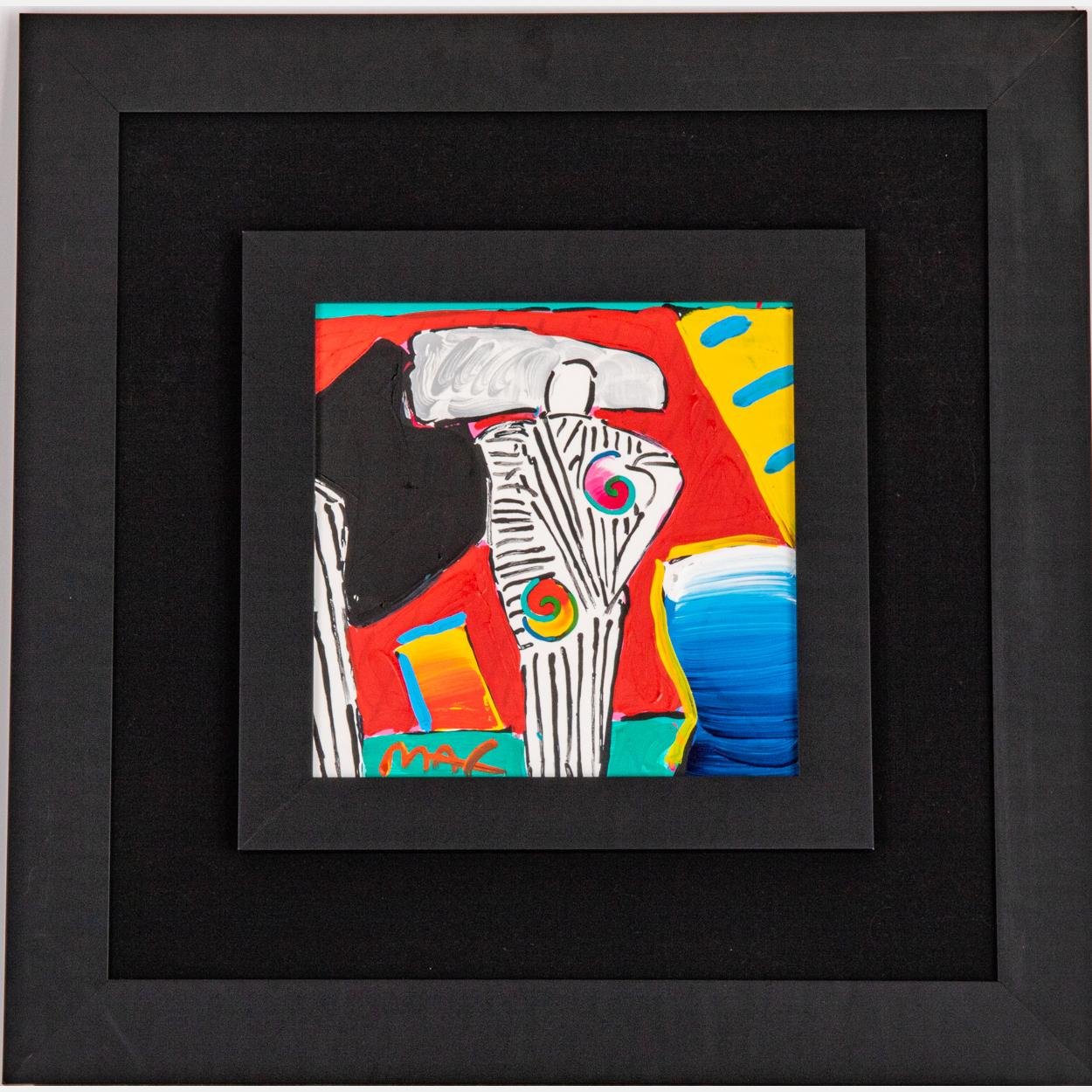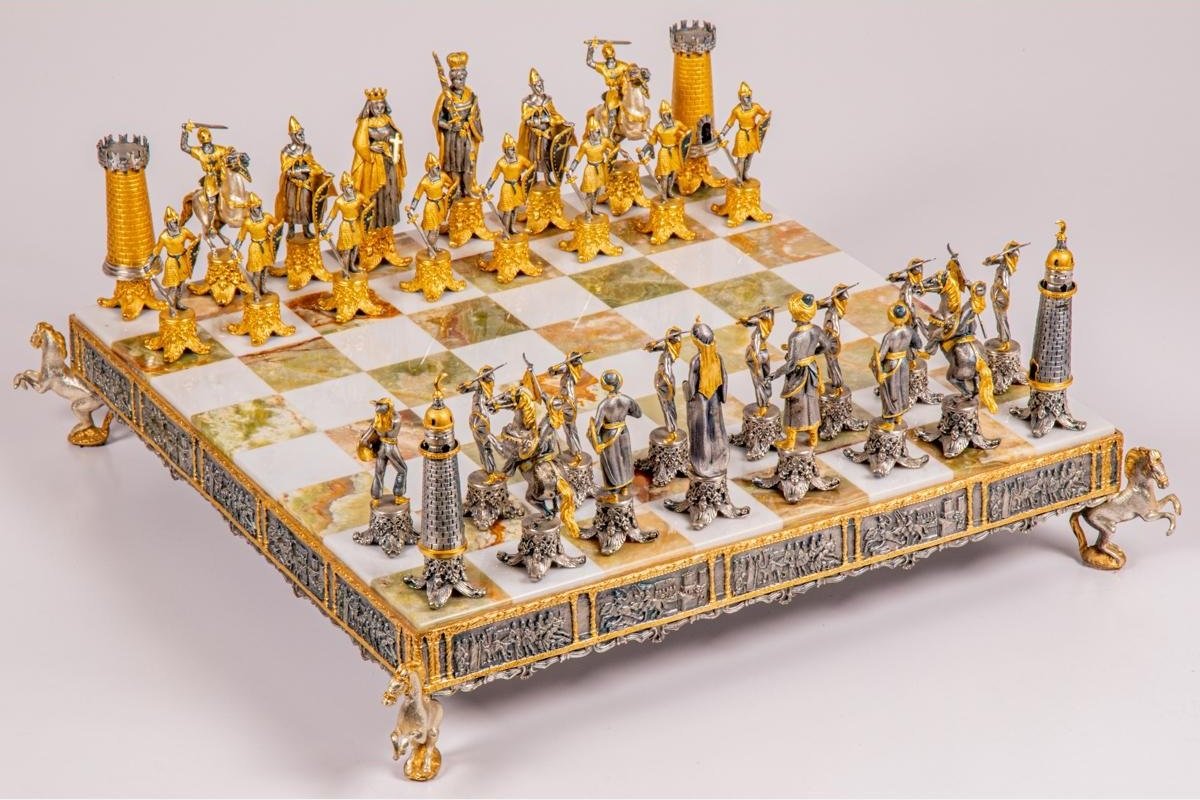2022, Wrapped
The biggest art news of 2022 can be found, in our humble opinion, through our weekly newsletter. It’s been an interesting year filled with all kinds of curiosities, What The Heck Is It’s, and more.
If you have no idea what we’re talking about, then clearly you’re not getting our weekly roundup of Curated Curiosities. We cover all kinds of topics from artists you’ve never heard of but should, strange artifacts that will make your jaw drop, and peculiar bits of art history. All of this is guaranteed to make you chuckle, and quite possibly make you a mildly more interesting!
Take a look at our subscriber’s favorite pieces of content this year to get a sneak peek, and be sure to sign up to get this content delivered to your inbox every Tuesday.
1. Mira, Miro!
As Catalan as they come, Miro’s works were shaped by his upbringing in Barcelona and featured themes of Catalan independence.
Growing up in the turbulent first half of the 20th century in Europe, his early works captured the qualities of Spain like no other artist.
Hemingway, with whom he used to enjoy boxing sessions, said of his work, The Farm, that it embodied “all that you feel about Spain when you are there and all that you feel when you are away.”
From the late 1960s to his death, he created the works for which he is best known.
His later works, an example of which appeared in one of our auctions, grew progressively more surreal as he explored sculpture, ceramics, and collage.
His style is unique and immediately recognizable. Take a look.
2. Out of The Trenches
Who is Arnold Rönnebeck, and more importantly, why should you care?
This German-American artist crossed oceans and continents during his colorful life. During his Parisian period, he regularly rubbed shoulders with Picasso and other famous contemporaries. Charming and affable, salons across Paris opened their doors to him.
Ronnebeck swapped his glamorous lifestyle for the trenches of World War I. Injured twice, his efforts were rewarded with an Iron Cross by King Wilhelm II. From here, we see his mediums and horizons expand. Moving from watercolors to lithographs in 1920, and from Europe to America in 1923.
He quickly immersed himself in the 1920s New York art scene, furiously writing essays and articles on the artistic trends of the time. His 1925 trip to New Mexico, however, is what indeed proved pivotal. The desert landscape and its indigenous people would transform into recurring themes throughout the rest of Ronnebeck’s career.
Lot 12 is a wonderful example of his fascination with the unpredictable, arid desert landscapes of New Mexico. Take a look at this piece and all of the beautiful works by other artists.
3. WTH Is It: Ancient Enemies’ Tool
This week’s What The Heck Is It is a one-of-a-kind object that dates back to the 12th century. We traced it back to an ancient Native American culture that spanned the present-day Four Corners region of the US. These ancient tribes were known as the Ancestral Puebloans, or Anasazi, meaning "ancient enemies," as they were called by Navajo.
The tool was most likely used for your typical activities like cutting down trees, making people look tough, or bludgeoning those who crossed enemy lines.
Don’t sweat it, though. This unique relic is firmly retired and is listed as lot #306 in our upcoming auction, where bidders have the opportunity to get their hands on an authentic piece of Native American history. Watch Jim explain more about it in the video.
4. Can You Say Drrrrama
Anyone who says they don't like (other people's) drama is a saint, a liar, or both. Regardless, we’re bringing you the dirt.
Leonardo de Vinci: painter, sculptor, architect, scientist, all-around intellectual genius, and creator of the "Salvator Mundi"
...
Or was he? (Insert Law & Order chun chun)
For 500 years, we've believed de Vinci to be the undisputed author of one of the most recognizable paintings in history, but Madrid's Prado museum thinks differently. Some even claim the painting was done by his assistant (gasp!)
The allegation around Mundi's provenance comes as a heavy blow given that it was sold at auction for a jaw-dropping $450 MILLION.
To be fair, A) if you’re Da Vinci’s assistant, you’re probably not too shabby of an artist yourself, and B) if you have half a billion bucks floating around to drop on a piece of art, then this controversy probably didn’t break the bank (unless you spent all your hard-earned cash on a single investment, which would make us question your judgment.)
5. One Is the Loneliest Number
In this week’s What the Heck Is It?…
Serena tell us more about this beautiful piece - which is actually a giant vase!
Originally exhibited as a pair in 1988, then going through a violent breakup, this vase lost its partner when it was broken in transit.
Fortunately, the owner was able to use the insurance money to purchase the second, which is what you see here.
That makes this the definition of a one-of-a-kind item.
To see all of the unique, intricate, hand-carved and painted details, watch the video on Instagram.
If you have been wondering where to put your gargantuan, man-eating plant - check it out.
6. Is Too Psychedelic Even a Thing?
If any analogy could sum up Peter Max, it is perhaps the following. Once commissioned by the US government to create new border signs.
They were put on ice for being 'too psychedelic.'
Max’s ‘cosmic style’ was influenced by his time spent traveling, exploring spiritualism, and appreciating eastern culture. He combined this with bold color to create a style that embodied 60s psychedelia.
His family fled nazi Germany before spending time in China, Israel, France, and finally, the US, which also shaped his style.
Despite being an icon of the 60s counterculture movement, Max developed into one of the most successful entrepreneurs in art, with his artwork appearing on stamps, the Whitehouse lawn, the Berlin wall, and even cruise ships.
Our auction this year presented an opportunity to collect a few of his works. Take a look at the additional lots by the artist now.
7. I’m Radioactive, Radioactive
Have you ever heard of Vaseline glass? It gets its name from its similarity in color to petroleum jelly. The glowing yellows and greens that make this glass unique comes from a radioactive element that has been used in glassware as far back as 79 A.D.
Uranium!
Around the time of WWII, when the US government realized that uranium is a key component in developing nuclear weapons, its use became restricted.
The one-of-a-kind glow and unusual history has Pre-WWII collectors from around the world scouring shops and searching auctions, black light in hand, hoping to find these rare gems.
Although these items might set off a Geiger counter, the radiation amounts are considered on par with what’s emitted from other everyday items like smoke detectors and cell phones.
Scientists state that there’s a world of difference between detectable and dangerous.
Take a look at this 48-piece set of Frederick Carder for Steuben glassware.
8. WTH is it? Rock Me Like a …
Did you know that the oldest wagon wheel (5,000 years+) was discovered in what is now Slovenia?
Another wheely interesting bit about it is that it is considered one of mankind’s most important inventions. Wheels allowed us to carry goods for long distances, broaden trade networks, and access wider markets. This allowed craftspeople, farmers, and overall communities to thrive and grow.
The wheel hub that you see here is actually a reproduction model. It might not be very practical without its spokes, but you have to admit - it sure is pretty! It was sold in one of our latest auctions.
Do you have any unique artifacts that might be worth something? Get an auction valuation here.
9. Nobility Only, Please
Do you ever wonder how to tell if your silver is real silver? Impress your friends with these shiny new facts we’ll drop on you.
Silver and gold are all called noble metals. Surprisingly not because only nobility could afford them, but rather because noble elements, or noble metals, are those that resist oxidation and corrosion and are also found in a free state on the earth’s crust. Other noble metals include platinum and copper.
So how can you tell that you have true nobility on your hands? When it comes to silver, it can be tricky. There are culprits like silver-plated metals that could easily pass for real silver but, unfortunately, don’t have much resale value. Silver plated items are made by taking a base metal like nickel, copper, or pewter, then coating it with silver.
Real silver - has markings like 925 or Sterling. This means that 925 out of 1000 parts are silver, making it 92.5% silver
Silver plated - has markings like EP or EPNS - standing for Electro Plated Nickel Silver - meaning your item is silver plated
Cast aluminum - usually won’t have any markings, but as it is incredibly lightweight, you should be able to tell just by picking it up that it isn’t real silver
What other tricks do we have up our sleeve?
Magnet trick - if your precious piece is silver, it will resist the magnet’s powerful forces
Look for wear & tear - silver coating tends to wear off over time
Drop a little bleach on it - a bit risky because if it’s not real silver, it will show its true colors
Now you’re an expert in metal-spotting!
10. Keeping Up with the Kashans
Have you ever heard of the silk road? Not the one on the dark web, you dilettante! We mean the trade paths that breathed life across East and West, pumping goods and services like oxygen from one country to the next for over 1,400 years.
Riches of unimaginable grandiosity crossed hands daily, and high-quality rugs were any trader's lifeblood. What fascinated us was that the silk road's most luxurious, opulent, and sought-after rugs were made of... wool.
Kashan rugs are as popular amongst true connoisseurs as they were during the height of the Persian empire. We have a wonderful rug available - take a look!
11. Grab You By The Gondolas
If you’ve been yearning for a trip to Italy but just aren’t quite ready to head over to that side of the pond, we have an exciting announcement - you can teleport yourself. The piece we are highlighting today serves two purposes - brightening your wall while taking you away to the canals of Venezia.
"Venetian Canal" was painted by Louis Aston Knight, a French-born American artist, well-known for his gorgeous, watery landscapes. The fruits of his craft even made it to the White House, with President Warren G. Harding purchasing an Aston Knight painting in 1922.
This lovely Venetian scene is available in our upcoming auction on May 18th, estimated at $1,200 - $2,000.
Don't miss the opportunity to be the envy of your imaginary friends as you glide through Venice's famed canals… all from the comfort of your living room. Or bedroom, whatever, it's your fantasy 😉
12. You’re Goblin It Up
We were told to write about something monstrous, turns out we’re not good listeners and it was actually monstrance. Monstrance means ‘to show’ in Latin. So what are we going to do with all of these horrendous puns? Show them off, of course. 🤷♀️ (We have a pun first, apologies later policy around here.)
These religious pieces were used for display purposes and contained anything from the Eucharist to ancient sacred relics.
We're imagining it as the "Guess-What's-Inside-Game: Holy Edition."
So whether you’re a sinner, saint, or anything in between - what would you store in it? To take a closer look, check out the video on Instagram, or bid on the piece here. Don’t deny yourself the other earthly delights, discover more hidden treasures.
13. Checkmate aka Shah Mat
The lot featured in this video appears in our May auction; a dreamy example of one of the oldest games in existence. The oldest archeological remains that resemble chess were found in South Asia, dating back to 2000-3000 B.C.
The earliest true evidence of the origins of chess date back to 600 AD in Persia, where the game called chaturanga made a name for itself. This Sanskrit word meant four-limbed, representing infantry, elephantry, cavalry, and chariot. Chatarunga spread slowly, like ink on paper, throughout the known world before maturing into the game we are familiar with approximately around the 16th century.
Other fun facts:
Checkmate comes from the Persian words Shah Mat, meaning ‘death to the king’
In the original game of chess, the queen could only move one square at a time. In 1495, there was a game-changer. Queen Isabella of Spain became the most powerful woman in Europe, thus the queen became the most powerful piece on the board.
14. Death and Taxidermy 🐀
The Victorians were a strange lot. From wearing smothering corsets to believing every problem could be solved with the liberal application of arsenic, their tastes ran a little (or a lot) different from today. They had a macabre fascination with death, superstition, and gore, and this even went as far as children's toys.
Wealthy Victorian-era parents wanted only the best for their children. Marbles & jump ropes? Nope, think again. Posh children would be given the best of the best in stuffed animals, the pick of the litter. Not just any stuffed animals, but the finest, most authentic. Literally.
We’re talking toy giraffes, dogs, cats, sheep, bears, and rabbits stitched together with pelts from the real deal. This phenomenon brings a whole new dimension to the idea of a petting zoo! Thankfully this grisly trend proved temporary, making the surviving examples valuable for their rarity.
2022 Curiosities Wrapped
That’s our top picks for 2022s curated curiosities. We hope you’ve had a great year, wishing you Happy Holidays and a Happy New Year! If you haven’t signed up to the newsletter yet, you can do so by following the button below. 2023 is sure to be full of even more Curated Curiosities!















